Scientific name: Ceratostigma plumbaginoides
Common names: blue plumbago, leadwort
Family: Plumbaginaceae (Leadwort)
Article by Susan Bruneni
Blooms in Santa Fe garden can range the full spectrum from reds, purples, gold-orange-yellows to whites. An unusual splash of blue can add drama and contrast to an already-colorful garden.
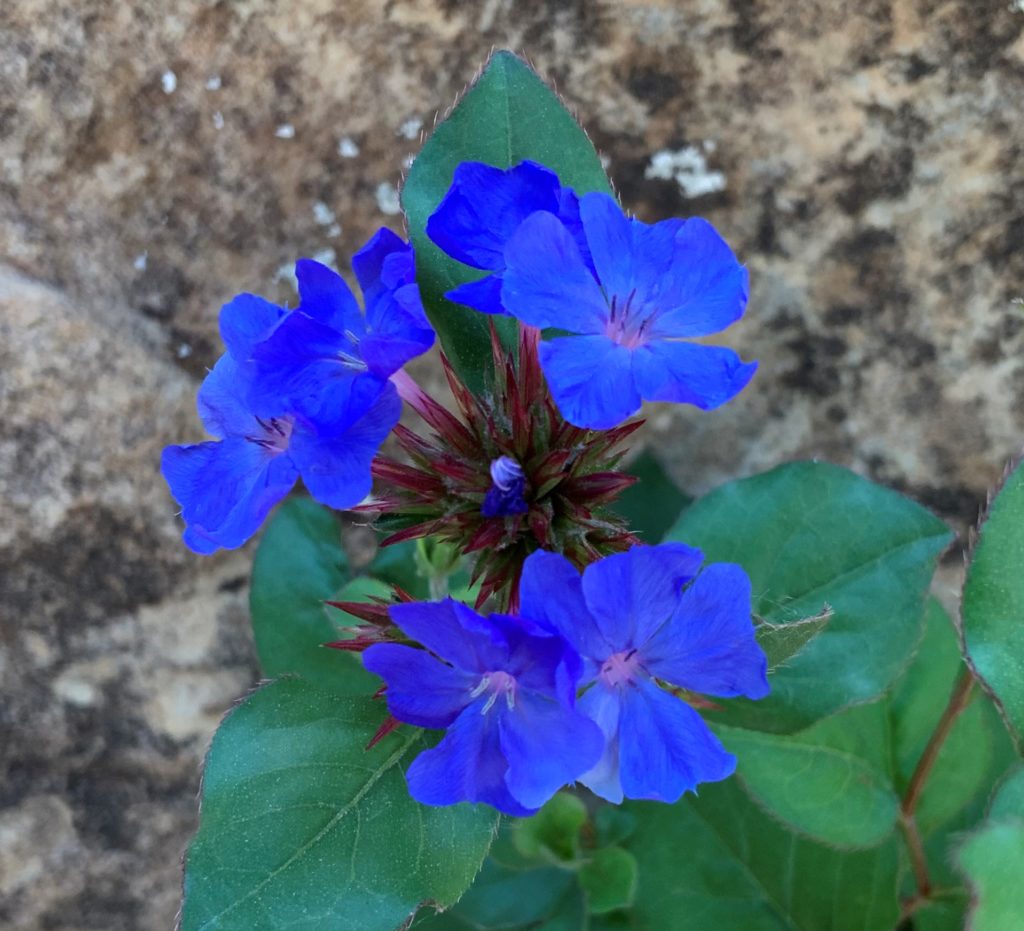
Ceratostigma plumbaginoides. Photo: Cristina Salvador.
Blue is rare throughout the natural floral kingdom. Why? A flower’s color is determined by the colors of light absorbed. What remains determines the color of the flower. Most blue light is absorbed, with predominately reds, oranges, yellows, whites and pinks showing as color. A blue addition to a garden is highly appealing.
A splendid blue plant that grows well in Santa Fe is Ceratostigma plumbaginoides, blue plumbago. Its common name, leadwort, is attributed to Roman botanist, Pliny the Elder, who thought that it could be a cure for lead poisoning. The genus, Ceratostigma, comes from the word in Greek, keras, which means horn and stigma, referring to the shape of the stigma.
The native habitat of plumbago is rocky places in China. Easily grown in sandy or loamy soil, it is somewhat tolerant of poor soil, but does not tolerate wet, poorly drained soils. It grows in full sun to part shade, and appreciates some afternoon shade in New Mexico summers. It tolerates dry soil but grows best with a medium amount of water. It spreads by rhizomes to form an excellent groundcover, reaching six-to-eight inches in height, but is not evergreen and does not tolerate foot traffic. Ceratostigma plumbaginoides is not fully hardy in Zones 5 to 6,and does best in a protected area or if mulched in late fall for winter protection in Santa Fe. Blue plumbago is located in the Museum Hill Garden within the Orchard Gardens borders, and tucked in the rock walls of the borders and South Ramada.
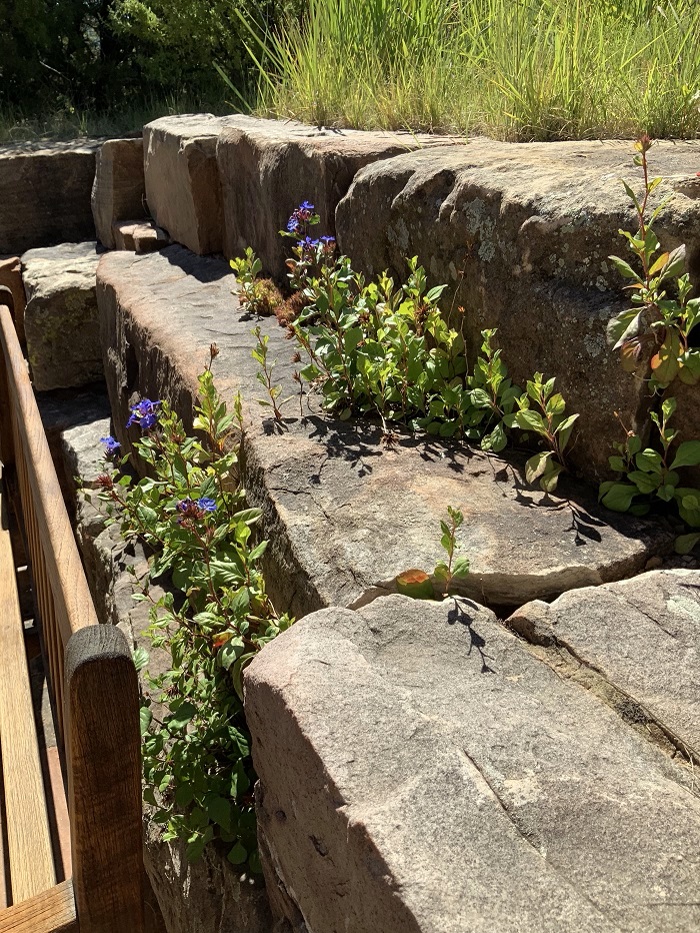
Blue plumbago in orchard border walls. Photo: Cristina Salvador.
The plumbago family belongs to the class termed “cosmopolitan distribution.” This is a family of plants with a range extending across all or most of the world in appropriate habitats (excluding polar regions or areas that will not support any flora). The extreme opposite of a cosmopolitan species is an endemic one, being found only in a single geographical location. The Latin specific epithet plumbaginoides refers to how closely it resembles the related genus Plumbago. In Santa Fe you may also see Plumbago auriculata, a relative that grows well as sprawling shrubs with branches that resemble vines. It is prized for the profusion of blue phlox-like flowers it produces for extended periods of time. It has few pests and diseases are rare and, once established, these easy-growing shrubs also tolerate drought. They can grow to six-eight feet but may not make it through our winters. Missouri Botanical Garden classifies it as a houseplant, indicating it may winter over indoors.
In Europe it attracts butterflies and acts as a larval food plant. In the Americas butterflies cannot reach nectar at the base of the long corolla. Some birds have figured out how to pierce the base of the flower to reach the nectar.
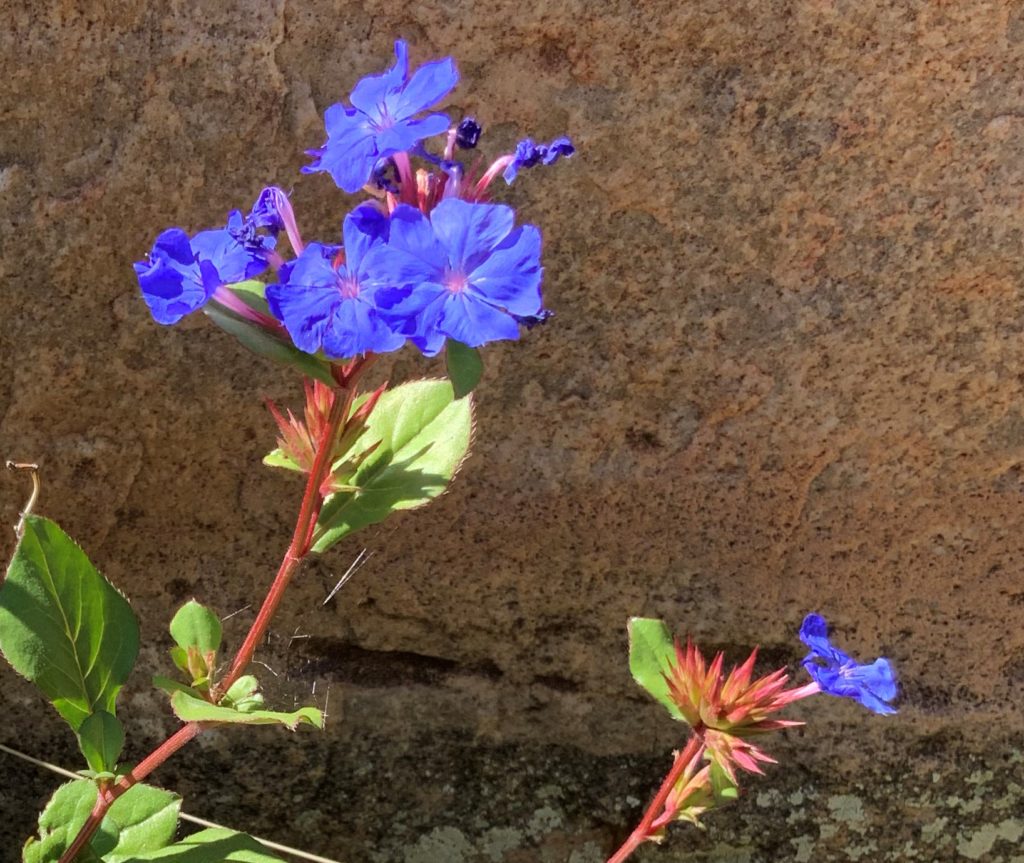
Blue plumbago. Photo: Cristina Salvador.
Blue plumbago was one of many specimens collected during the Ages of Exploration and Discovery, between the 1400s to 1800s. Advances in navigation and astronomy expanded the scope of sailing. Governments, private patrons and botanical gardens formed and financed parties. They were mainly seeking gold and silver, shorter trade routes, but employed artists and naturalists for documentation. Collected specimens fed the growing demand by museums, botanical gardens and private patrons. Today, the Natural History Museum (UK) features a botanical selection of six million specimens from around the world.
Botanists were looking for spices but collected everything. A head botanists often had a staff to gather and collect. The fame and prestige achieved by the head botanist often assured him high standing at a botanical garden or academic setting. Propagation programs within these institutions led to formation of commercial nurseries who then sold widely to private and commercial gardeners in Europe and the Americas.
Naturalists such as Sir Joseph Banks, who accompanied the first expedition of Captain Cook (1768-1771), personally selected and paid for his staff of eight assistants. The notoriety he received landed him the title of president of the Royal Society in 1778.
American expeditions focused on the continent’s uncharted land in the early 1800s. In 1842, the idea of a national botanic garden was re-established when the United States Exploring Expedition to the South Seas (the Wilkes Expedition) brought a collection of living plants from around the globe to Washington, D.C. These form the first permanent collection of plants for the U.S.
As a non-native species that is well adapted and not invasive in our gardens, blue plumbago adds year round interest. The leaves will turn a deep red in the fall and even in winter this species will catch your eye with dormant dried stems and clusters of seed heads that mark where the plant will return in late spring.
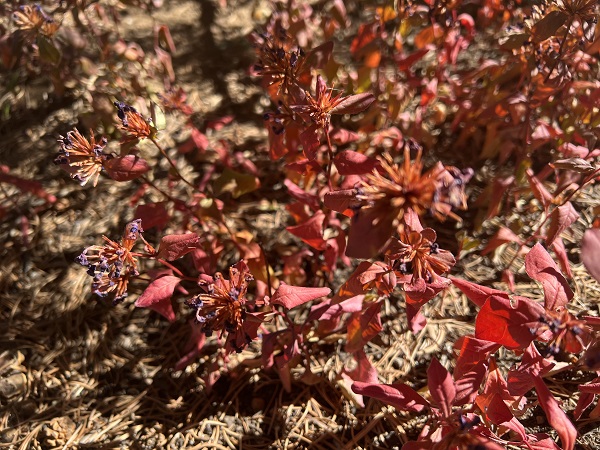
Blue plumbago in fall. Photo: Kathy Haq.
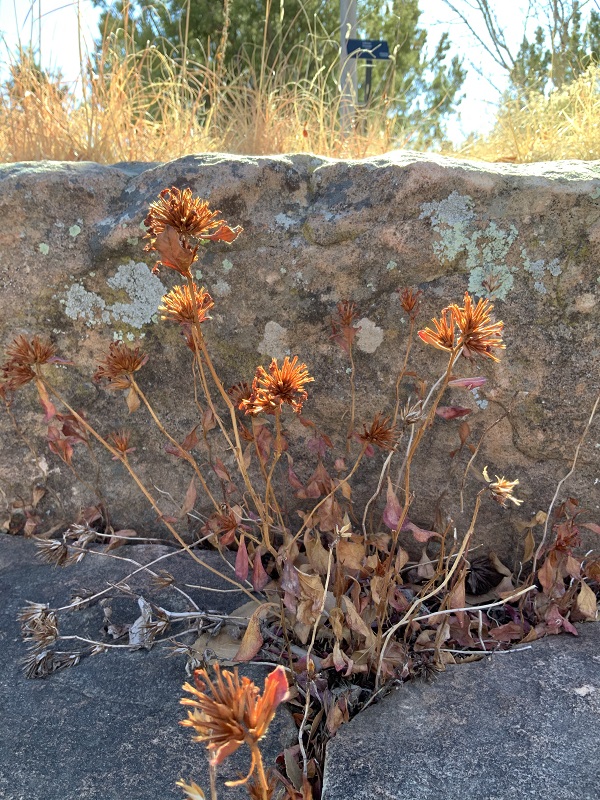
Blue plumbago in winter. Photo: Cristina Salvador.


